BONE CANCER
Cancers that start in
the bone are rare. They are distinct from cancers that develop at
other sites in the body and spread to
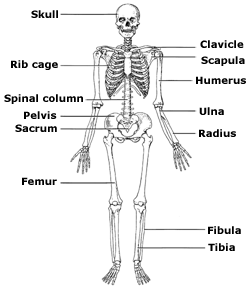 the bones later on. Bone cancer
develops from cells in the bone. A rarer type can start in cartilage, the
firm connective tissue that surrounds and cushions many joints. If the
cancer is not treated, cancer cells from the original site may break away
and spread to other parts of the body, such as the lungs, other bones or
other internal organs.
the bones later on. Bone cancer
develops from cells in the bone. A rarer type can start in cartilage, the
firm connective tissue that surrounds and cushions many joints. If the
cancer is not treated, cancer cells from the original site may break away
and spread to other parts of the body, such as the lungs, other bones or
other internal organs.
Signs and
symptoms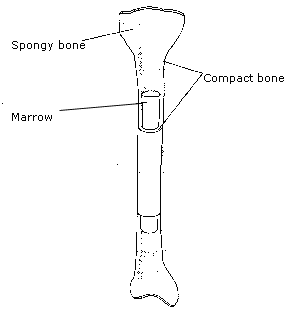
Symptoms of bone
cancer will vary depending on the size and the location of the cancer.
They may include:
-
pain and/or
tenderness in the affected area (this may feel worse at night)
-
swelling in the
area, possibly a lump or mass
-
problems with
movement
-
general symptoms
such as tiredness, fever and weight loss.
Often, these signs
and symptoms will indicate problems other than cancer. However, people who
notice any symptoms should see their doctor, who will be able to find the
cause or refer them for further tests.
Initially the doctor will ask questions about previous medical problems,
and carry out a physical examination. They may also arrange referral to a
hospital for further tests.
BONE CANCER TESTS
Usually you begin by seeing your doctor who will
examine you and ask about your general health. Your doctor will ask you
about your symptoms. This will include what they are, when you get them and
whether anything you do makes them better or worse.
Your doctor will ask you to lie down for a physical examination and will
feel the area where there is pain or swelling. It may feel tender or it may
be possible to feel a lump. After your examination, your doctor may need to
refer you to hospital for tests and X-rays. You may be referred directly to
a specialist or your doctor may send you to hospital for some tests first -
usually an X-ray of the bone at the local hospital.
pain or swelling. It may feel tender or it may
be possible to feel a lump. After your examination, your doctor may need to
refer you to hospital for tests and X-rays. You may be referred directly to
a specialist or your doctor may send you to hospital for some tests first -
usually an X-ray of the bone at the local hospital.
At the hospital
If you see a specialist, you will be asked about
your medical history and symptoms. The specialist will then examine you by
feeling the bone that is painful or swollen. You may be asked to have blood
tests and a chest X-ray to check your general health. Then your tests will
be arranged in the out patients department. You may be asked to have:-
- X-rays
- A bone scan
- An MRI scan
- A biopsy
X-rays
X-rays use a low dose of radiation to take pictures of the body. The bones
show up well on X-rays and this is the first test you are likely to
have. Sometimes X-rays can give a very characteristic picture, which can
help the specialist to diagnose particular types of bone cancer. A primary
bone tumour will usually show up as one of the following:-
- Destruction of bone
- New bone growth
- Swelling over the bone
- Swelling in the soft tissues surrounding the bone
Bone Scan
Bone
scans are very sensitive and can show up a number of problems with the
bones. You are given a small injection of a mildly radioactive
material. This collects in areas of damaged bone called hot spots. Hot
spots can mean bone cancer. But they can also show if you have arthritis
or other bone diseases. The amount of radioactivity used in a bone scan
is very small. It soon breaks down and goes away and is nothing to worry
about.
MRI Scan
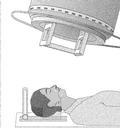
MRI scans are now routinely done as an investigation for bone tumours. MRI
stands for magnetic resonance imaging. This is a scan using magnetism to
build up a picture of the inside of the body. They are very useful for
showing up how far a bone tumour has grown inside a bone. MRI scans are
completely painless, but rather noisy and you have to stay very still while
the scan is being taken. You cannot have an MRI if you have any metal parts
in your body, for instance a pacemaker or a joint replacement. Do check
with your doctor if you are at all concerned.
of the inside of the body. They are very useful for
showing up how far a bone tumour has grown inside a bone. MRI scans are
completely painless, but rather noisy and you have to stay very still while
the scan is being taken. You cannot have an MRI if you have any metal parts
in your body, for instance a pacemaker or a joint replacement. Do check
with your doctor if you are at all concerned.
Biopsy
Some bone tumours are benign - they are not cancer and cannot spread. The
only sure way to tell if a lump is a cancer or a benign tumour is to get a
sample of the lump and examine it under a microscope. This is called a
biopsy. Remember - a bone biopsy is a
highly specialised procedure. It should only be done by a specialist. If
it is done badly, it can spread the cancer. If you are suspected of having
a bone cancer, ask for the biopsy to be done at the specialist centre where
you will be treated if the diagnosis is confirmed.
The biopsy will be examined by a pathologist. This is a specialist in body
tissues and cells. The cells of a cancer look different to benign bone
tumour cells. There are 3 main types of biopsy you can have:- Fine needle aspiration + Core needle biopsy + Surgical biopsy
Fine needle aspiration + Core needle biopsy + Surgical biopsy
Fine
needle aspiration is sometimes written as fna. A thin needle is
put into the lump in your bone. The specialist will try to feel the
lump so that he or she knows where to put the needle. If the lump is
hard to feel, the doctor may use an ultrasound scan to see exactly where
it is and guide the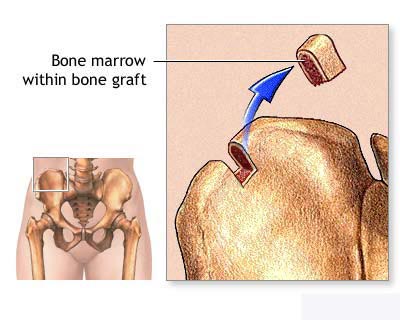 needle into place.
needle into place.
Once the needle is in the lump, fluid will be drawn out. The fluid will
contain cells which will be examined to see if they are cancerous.
A core needle biopsy (or Tru-Cut biopsy)
is the same as an fna, but uses a wider needle. A core of bone tissue is
drawn out, rather than just fluid and cells. The tissue will be examined
for cancer cells. You may have this done under local anaesthetic. You
can ask for something to make you drowsy as well if you are at all nervous
about it.
Surgical biopsy is not used so often these
days. During a minor operation, a small piece of bone is removed. This may
be done under local or general anaesthetic. Doctors do not do this test
unless they have to. Any operation carries an infection risk and
infection in the bone can be difficult to deal with.
If your tests show you have bone cancer, you may have
to have further tests to see if the cancer has spread. And to decide on the
best treatment. You may have:
* CT scan * Chest X-ray
* Blood tests
CT scan
This is a computerised scan
using X-rays. If you have been diagnosed with a bone cancer, you will be
asked to have a CT scan of your chest. This is to see if there are any
signs of enlarged lymph nodes or other cancer spread. Bone cancer does
sometimes spread to the lungs. You may be given an injection of dye called
‘contrast’ before the scan. This helps to make the scan clearer to read.
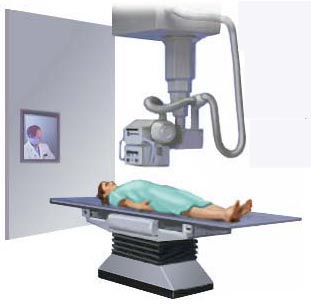 Chest
X-ray
Chest
X-ray
If you have not already had a chest
X-ray, you may be given one to rule out any spread to the lungs.
Blood tests
You will have general blood tests to check your overall health. Your blood
cell counts will be measured and tests will be done to check your liver and
kidneys.
If you have osteosarcoma, your doctor may measure your AP level (alkaline
phosphatase). This chemical is a measure of bone activity. If you have a
bone cancer, then levels of bone cell activity in the affected bone may well
be higher than normal. Not everyone with osteosarcoma has raised AP
levels. But it will be measured to check if it is raised in your case.
After the tests
You may be asked to come back to the hospital when
your test results have come through. Or you may have arranged with your
specialist that you will be contacted at home. The results are bound to
take a little time. Bone biopsies take longer than most biopsies to
process, so if you have to wait a while, it doesn't mean that anything has
gone wrong. You are bound to feel anxious during this time, but try not to
worry too much. It may help if you ask your specialist how long the results
are likely to take so that you have some idea of how long you will have to
wait.
BONE CANCER TREATMENTS
Treatments for bone cancer include:
-
Surgery
aims to remove the cancer while leaving as much of the bone behind as
possible. The extent of surgery necessary depends on the size and location
of the cancer. Doctors may also use surgery to treat primary bone cancer
that has spread to other parts of the body.
-
Chemotherapy
Doctors often use a combination of chemotherapy drugs to treat bone
cancer. In recent years chemotherapy has become an important treatment
because the cancer usually responds well to it. Doctors generally give
chemotherapy before surgery to shrink the cancer, making it easier to
remove. People may also receive chemotherapy after surgery to destroy any
remaining cancer cells.
-
Radiotherapy
Doctors do not often use radiotherapy used to treat bone cancer, as most
types are not very sensitive to radiotherapy.